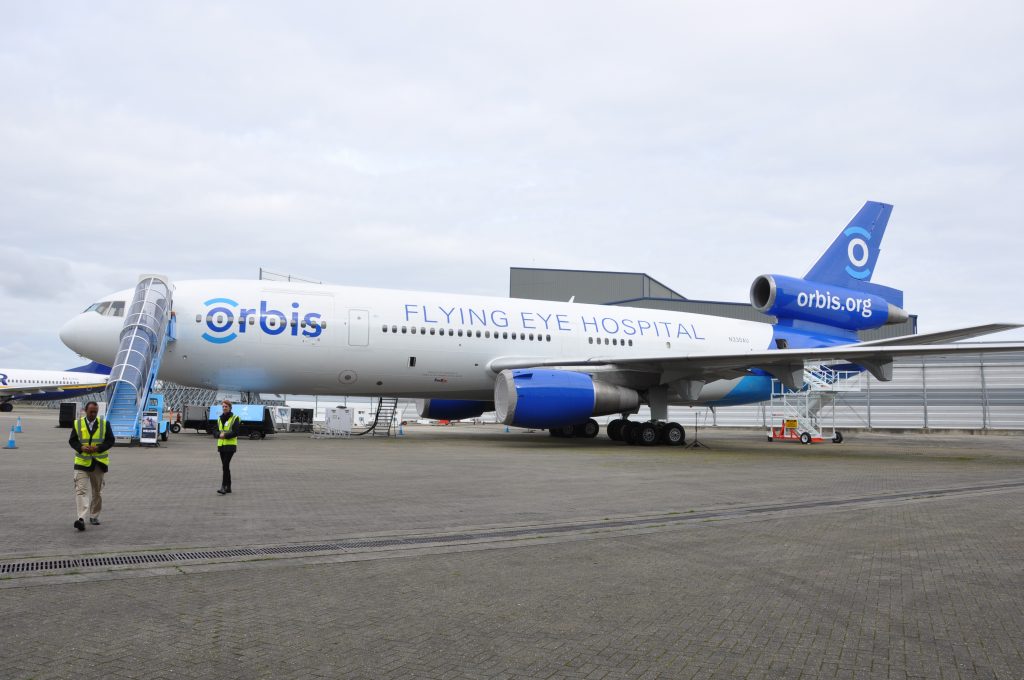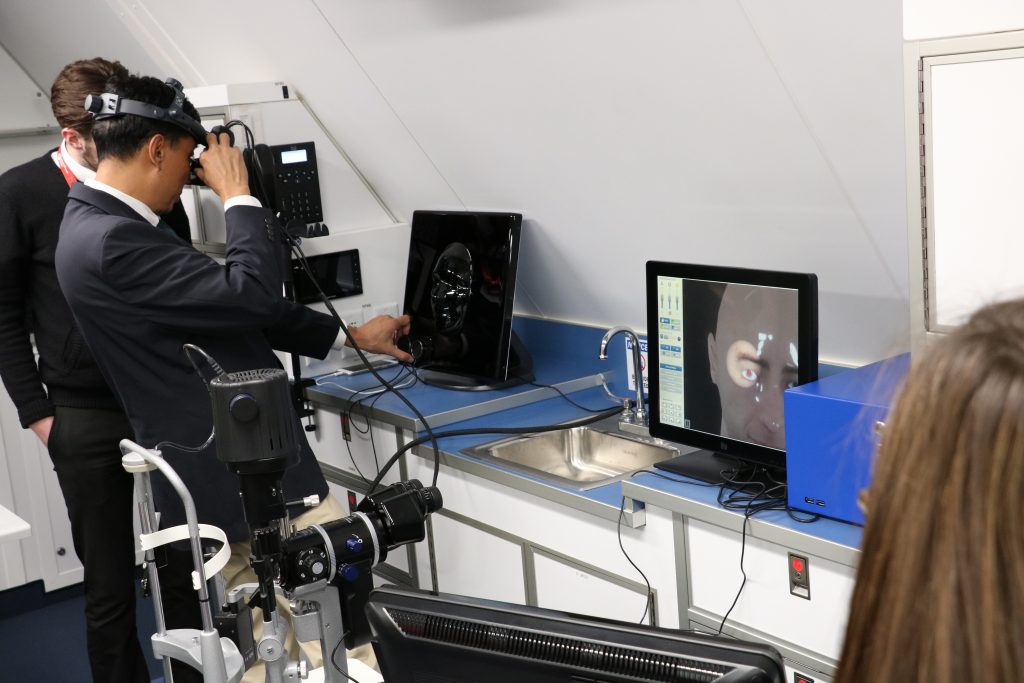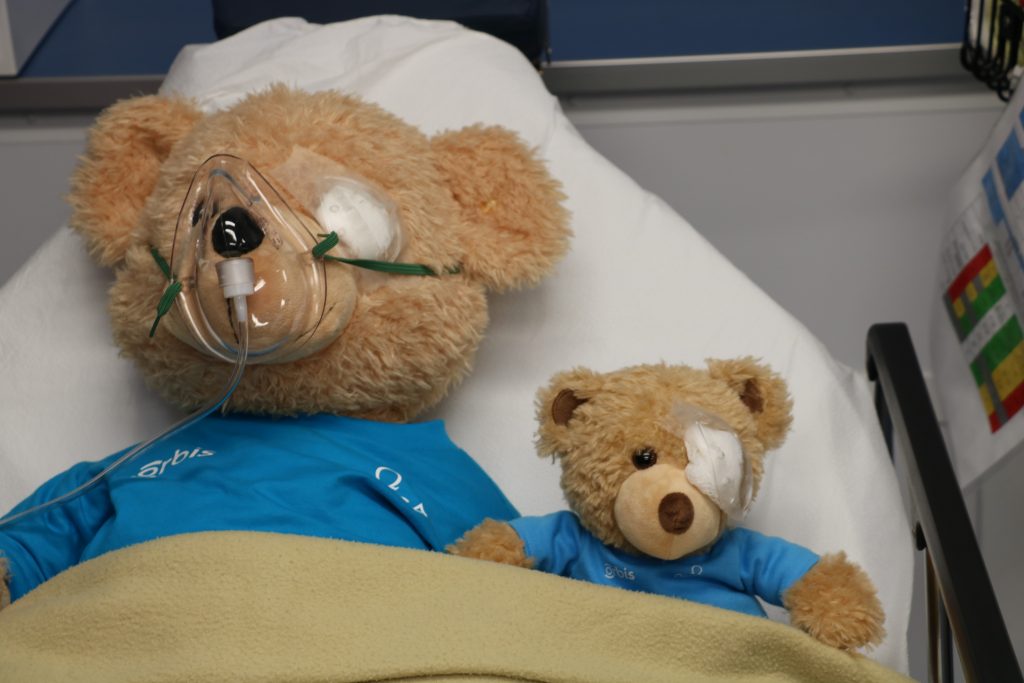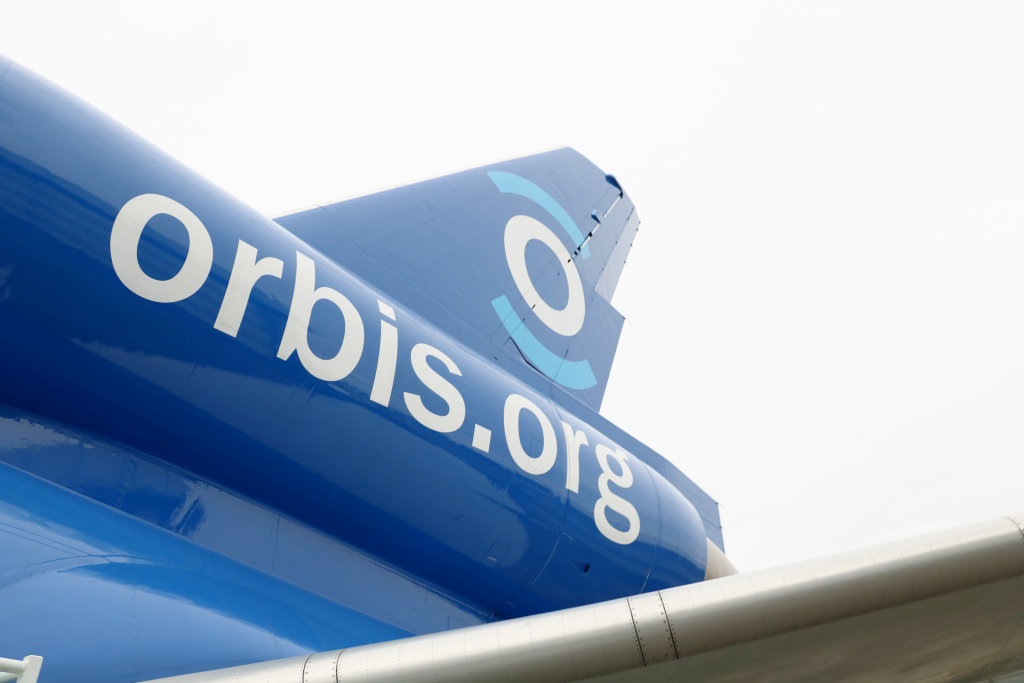Orbis – Flying Eye Hospital
By Robert McGregor
On Friday 17th March the Worshipful Company of Spectacle Makers (WCSM) organised tickets to visit Orbis, the Flying Eye Hospital at Stansted Airport. WCSM are a livery company located in the city of London and this charity has been supporting the prevention and treatment of vision impairment since 1629.
Prior to event I visited the Orbis website www.orbis.org.uk to find out a little more about this organisation. Whilst this proved to be very informative, seeing first-hand what has been created within a typical passenger aeroplane, is truly inspiring – this MD-10 plane is quite magnificent.
Orbis is a humanitarian organisation, determined to deliver education at all levels. Expert medical volunteers, hospital partners and local eye care programmes, all support the desire for Orbis to reach the marginalised and underserved throughout the world.
It is estimated that there are 285 million visually impaired people globally, 90% of these live in developing countries. Staggeringly 80% of all blindness is treatable or preventable.
The MD-10 is the 3rd Generation Orbis plane and is equipped with the very latest technology, designed to provide training sessions to a range of health professions, teachers and community workers around the world. When in service the plane will typically have 21 staff working on the plane, who aim to deliver 4-5 surgeries per day.
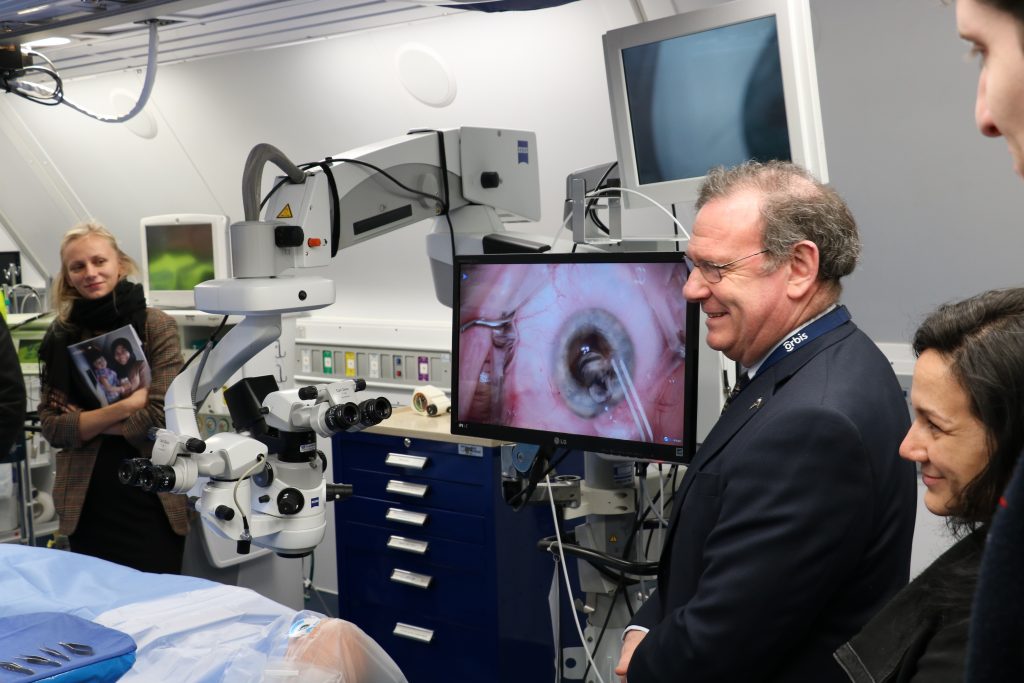
The internal design of the plane is modular, housing a training classroom for up to 46 people, biomedical work area, AV/IT room, laser room, operating room, sterilisation room and pre-and post-care operative care room.
The technology installed within the AV/IT room includes a two-way microphone for real time interaction whilst operations are conducted, as well as a 3D visual training camera system, that provides microscopic views of live surgeries that relay this information directly into the classroom. Every surgical procedure is recorded, this will be used as media for on-going education as well as providing live streaming to the visiting country whilst grounded at the airport.
The operating room itself has the very latest technology to deliver the highest level of training for all surgical procedures. This area was impeccable, many hospitals would be proud to have such a clean and professional facility. The room is located over the wings of the aircraft as this is the strongest and most stable part of the plane, the floor within the operating theatre has also been reinforced to eliminate movement. In close proximity you also find the laser treatment area, which is cleverly positioned as the plane offers an observation point to view live laser surgery.
The sterilisation area provides an essential educational opportunity, as nurses will learn how sterilise instruments and understand the importance of cleanliness, to ensure unnecessary infections are prevented. This environment has to be maintained to internationally recognised hygiene and airflow standards.
As with every surgery there is a need for pre-and post-operative care, an area is dedicated for this activity, nurses will spend their time preparing people for surgery or supporting their recovery. One way to help a child recover quickly is to provide a small gift. Orbis has a cargo of teddy bears and every paediatric patient is given a teddy bear post-surgery to aid their recovery. This is a small but lovely gesture.
The very first flying eye hospital took to the skies in 1982 and since then this organisation has visited over 90 countries reaching hundreds of communities and delivered training to thousands of doctors and nurses. Orbis currently operate 40 long term programmes in many third world countries, the most recent initiative is that of their new campaign “Operation Sight”.
Operation Sight has some very ambitious goals:
- To provide more than 100,000 training sessions for eyecare teams and health workers
- To support more than 30 hospitals to improve their eye care services in Africa and Asia
- To screen 4 million children in India and Bangladesh through the schools.
- To reach 6 million people living at risk of blindness in trachoma endemic Ethiopia and Zambia.
The above goals will lead to delivering over a million eye care treatments for children and adults by the end of 2018.
Orbis is funded by industry and personal pledges, there are many ways you can make a donation to support the Operation Sight campaign, visit www.operationsight.orbis.org for more information.
Perhaps one of the understated benefits of such an organisation is that as well as delivering essential training, it raises the need for improved eye care wherever it lands. Orbis is very much an ambassador for our eye care industry and I was honoured to have an opportunity to see this first hand.
My thanks go to the Worshipful Company of Spectacle Makers for providing this opportunity to me, as this is another, very relevant and important charity within our industry. To find out more information please visit https://www.spectaclemakers.com

